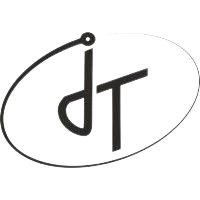Integrated Connectivity Cluster with Mobile Application Support
Technological advancements in the automotive industry and the increasing demands of humankind have resulted in the addition of new features in automotive clusters. Usually, instrument clusters deliver basic driver information in the form of parameters such as RPM, fuel level, temperature whereas nowadays clusters provide additional data like driver monitoring, collision avoidance etc., while enabling a safe and distraction-free driving experience. Lately, OEM’s have become aware of the benefits of navigation but only few of them have adapted this feature in their two-wheelers while its predominantly used in four-wheelers.
Indium Tech’s partnership with leading industry OEM’s and Tier 1 vendors resulted in designing and developing next-generation integrated connectivity clusters for two-wheelers. One of the latest requirement was to support android mobile application integration in a TFT-based cluster for navigation purposes using Indium Tech’s Sparklet GUI library - specially optimized for i.MX RT1170 series.
Two types of technologies can be employed to integrate navigation details in a TFT-based two-wheeler instrument cluster. One can be an inbuilt feature in two-wheeler vehicles, and another can be with the help of external mobility devices like smartphones or tablets. Indium Tech has proven industry experience in developing clusters using both the technologies.
Enabling it as an inbuilt feature in two-wheelers might seem like a sophisticated solution, as extending connectivity support through external mobility devices comes with the limitation of always having the device with the rider. Nevertheless, It is less complicated and cost-efficient in nature. Indium Tech focused on enabling the second type of technology as a part of its solution.
Offering connectivity using external mobility devices can be economical as it just requires the reuse of existing software applications - wirelessly. Navigation API’s like MapMyIndia, Google Maps, OpenLayers, OpenStreetMap , HERE, Mapfit etc., that run on the mobile will provide the necessary navigation details to the user with the help of sounds and a user-friendly UI. However, the rider will find it exceedingly difficult to use their handset while driving.
A custom app is created to communicate with the smart cluster. Using Bluetooth, the rider’s smartphone was connected with the instrument cluster of the two-wheeler using a pre-defined PIN. Further updates of additional information is sent from the mobile app. For instance, if the rider needs to travel from place A to place B, he/she has to search the route in any navigation API available via the app, and the navigation-related information visible on the smartphone were transferred to the cluster as visual instructions. In this case, real-time indicators glow as per the instruction given by the rider upon handling the switches. The app streams the navigation instructions like turning right/left along with the distance details on the cluster in an intuitive and uncluttered way without distracting the rider. Apart from this, the rider can receive all sorts of notifications - from calls to WhatsApp messages directly on the cluster screen. The two-wheeler health updates were made accessible on the user application. This implementation can also help manage vehicle servicing, monitor remote fuel usage, check vehicle performance etc.
